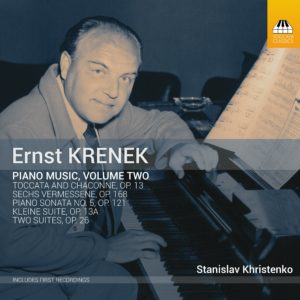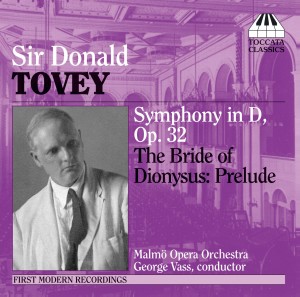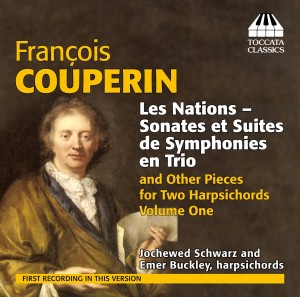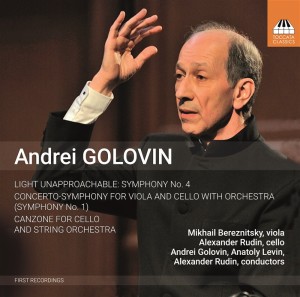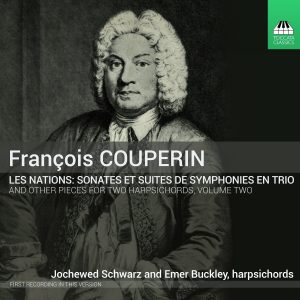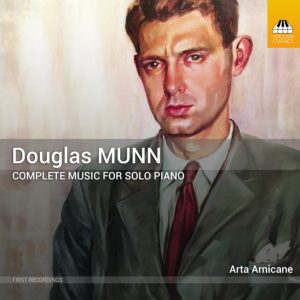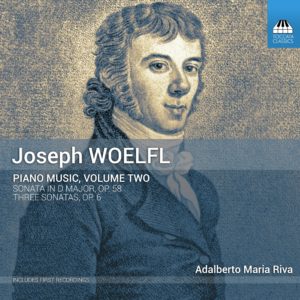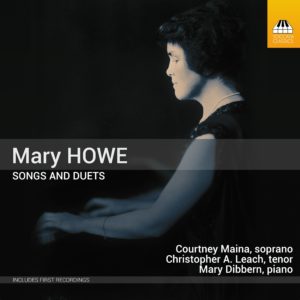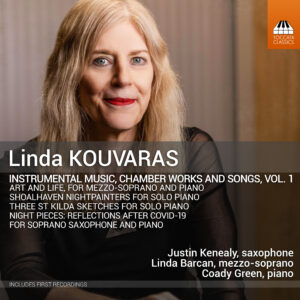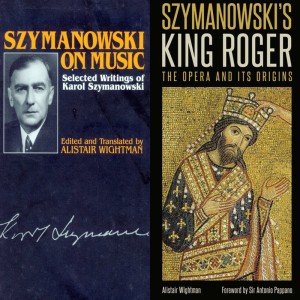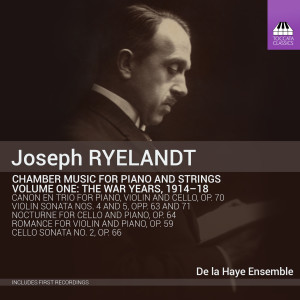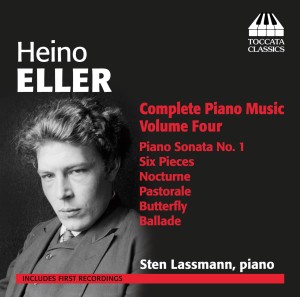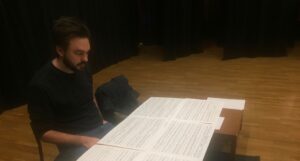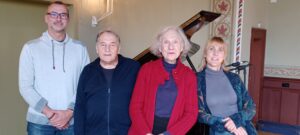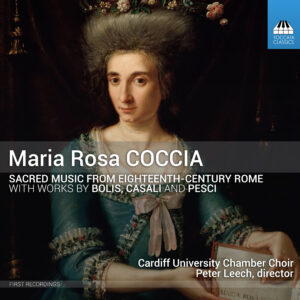Search Results for "NS0-701 Latest Exam Testking 😆 Exams NS0-701 Torrent 🐣 Clearer NS0-701 Explanation 🏜 Go to website ▶ www.pdfvce.com ◀ open and search for ▛ NS0-701 ▟ to download for free ✏NS0-701 Valid Exam Preparation" – Page 11
Ernst KRENEK: Piano Music, Volume Two
This first extended survey of the piano music of Ernst Krenek (1900–91) continues with a range of works showing his craftsmanship and imagination – and humour. The early Toccata and Chaconne, Op. 13, has its origins in a joke intended to pull the legs of musicologists and music critics, but it develops into a massive contrapuntal essay of astonishing ambit. Krenek’s treatment of Baroque and contemporary dances in the three early suites reveal a fondness for learned whimsy – and that wry dispassion informs even the elegiac and brittle Fifth Sonata, written a quarter-century later in American exile. The closing Sechs Vermessene are kaleidoscopic miniatures with an improvised quality, as if advanced musical modernism were meeting the freest of free jazz.
Stanislav Khristenko, piano
Sir Donald Tovey: Symphony in D, The Bride of Dionysus: Prelude
Donald Francis Tovey (1875–1940) has long been known as one of the finest writers on music in English – but he saw himself primarily as a composer. His powerful and ambitious Symphony, written in 1913, has its stylistic roots in Brahms and Bruckner, and more distantly in Schumann, but Tovey was also open to contemporary developments: the harmonic procedures occasionally invoke Reger, the adventurous use of orchestral colour suggests Mahler and Nielsen and the scale – it is almost an hour in length – casts the work as a mighty cousin to Elgar’s two symphonies, finished not long before. This is its first recording since Tovey himself conducted a BBC broadcast performance in 1937. The disc opens with the first recording of the gentle, noble Prelude to Tovey’s only opera, The Bride of Dionysus, begun in 1907 and completed in 1918.
Malmö Opera Orchestra, Sweden, orchestra
George Vass, conductor
François Couperin: Music for Two Harpsichords, Volume One
François Couperin published two collections of chamber music — the Concerts Royaux in 1722 and Les Nations in 1726 — in what today would be called open scoring, so that they could be performed by whatever instruments were to hand. But he confessed in the preface to a later publication that he himself preferred to perform them on two harpsichords, although that suggestion had to wait for this series of two CDs to be taken up in a recording. Here Les Nations and movements from the Concerts Royaux are presented with a number of his Pièces de clavecin, also in rarely heard realisations for two harpsichords.
Jochewed Schwarz, harpsichord
Emer Buckley, harpsichord
Andrei Golovin: Orchestral Music
The music of Andrei Golovin (born in Moscow in 1950) lies in the Russian symphonic tradition downstream from Shostakovich and Boris Tchaikovsky. His music, like theirs, employs a sombre lyricism to conjure up images of vast open spaces but can also flare up in outbursts of considerable power. This CD presents a conspectus of almost four decades of his compositions, ranging from his first symphony to his most recent.
Tchaikovsky Symphony Orchestra; Andrei Golovin, conductor; Musica Viva Chamber Orchestra; Alexander Rudin, cello and conductor; Mikhail Bereznitsky, viola; Moscow Conservatoire Concert Symphony Orchestra; Anatoly Levin, conductor;
François Couperin: Music For Two Harpsichords, Volume Two
François Couperin published two collections of chamber music – the Concerts Royaux in 1722 and Les Nations in 1726 – in what today would be called open scoring, so that they could be performed by whatever instruments were to hand. But he confessed in the preface to a later publication that he himself preferred to perform them on two harpsichords, although that suggestion had to wait for this series of two albums to be taken up in recordings. Here Les Nations and movements from the Concerts Royaux are presented with a number of his Pièces de clavecin, also in rarely heard realisations for two harpsichords.
Emer Buckley and Jochewed Schwarz, harsichords
Douglas Munn: Piano Music
The man who as W. D. Munn published papers on that branch of mathematics known as semigroup theory had another side to his personality: Douglas Munn (1929–2008), professor of mathematics at the University of Stirling, was also a fine pianist and a gifted composer. His piano music has its origins in Chopin, Brahms and Bartók but is clearly also inflected by Scottish folksong – much of it has a sense of the hills and the open spaces – and is written by someone with an intimate knowledge of the instrument. The Latvian pianist Arta Arnicane knew Douglas Munn and this album is the fulfilment of an unspoken promise to record his piano music.
Arta Arnicane, piano
Joseph Woelfl: Piano Music, Volume Two
Joseph Woelfl (1773–1812), a friend of the Mozart family from childhood, was one of the best-known musicians of his day: he was regarded as a rival of Beethoven in Vienna and a worthy successor to Haydn in the musical life of London. His late-Classical piano music sits between Mozart, Haydn and Clementi and looks forward to Schubert and Mendelssohn. This first-ever project to examine it in any detail hopes to rescue Woelfl’s once starry reputation from the folds of history. The three sonatas which open this second volume are dedicated ‘à Mr L. Van Beethoven’.
Adalberto Maria Riva, piano
Mary Howe: Songs and Duets
The name of Mary Howe (1882–1964) seems to have vanished from the history books. But she was an important voice in American music in the first half of the twentieth century, as an activist and organiser, as a concert pianist and, especially, as a composer. This pioneering album of her songs shows her late-Romantic style open to influences from Debussy, Mahler, Richard Strauss and other contemporaries: she was, she said, ‘alert for new sensations, like a Puritan on a holiday’.
Courtney Maina, soprano (tracks 1,2, 4, 10-13, 15, 16, 19, 20, 22)
Christopher A. Leach, tenor (tracks 1, 3, 5-10, 13, 17, 18, 21, 22)
Mary Dibbern, piano
Linda Kouvaras: Instrumental Music, Chamber Works and Songs, Volume One
As with many other Australian composers, the music of Linda Kouvaras (b. 1960) has a strong sense of wide-open spaces, expressed in lyrical, elegiac melodic lines that soar over freewheeling Lisztian piano textures and atmospheric echoes of French Impressionism. In this first album of a series presenting all of her instrumental works, chamber music and songs written since 1991, she also addresses two major contemporary issues, with a duo for saxophone and piano exploring the human response to the COVID-19 pandemic and a song-cycle confronting domestic violence from a woman’s viewpoint.
Justin Kenealy, saxophone
Linda Barcan, mezzo-soprano
Coady Green, piano
Special Offer — A Polish Package
Buy a copy of the latest Toccata Press book, Szymanowski’s King Roger: The Opera and its Origins, published in conjunction with the recent new production at the Royal Opera House, Covent Garden, and we’ll throw in a hardback copy of Syzmanowski on Music, worth £35, for a mere £7.50.
Joseph RYELANDT: Chamber Music For Piano And Strings, Volume One: The War Years, 1914–18
The Belgian composer Joseph Ryelandt (1870–1965) was a humble and reverent man, writing in 1940: ‘If it is God’s will that my works be propagated some day in the future, then it will happen’. Toccata Classics cannot knowingly claim divine intervention as explanation of this first release in a series exploring Ryelandt’s chamber music for piano and strings but offers this entirely unknown but thoroughly attractive repertoire – honest and sincere music downstream from Debussy, d’Indy and Fauré – as evidence of a long life well lived.
De la Haye Ensemble
Heino Eller: Complete Piano Music, Volume Four
As both composer and teacher Heino Eller (1887-1970) was one of the founders of the classical tradition in his native Estonia. Yet his copious output for piano — some 200 works — is largely unknown, an omission this series of eight CDs seeks to redress. This fourth volume presents Eller's First Sonata, a Romantic work of gigantic proportions, composed for his final exam at the Petrograd Conservatory, as well as a number of miniatures, including one of his most popular pieces, Butterfly, and ends with the sage but passionate Ballade in C sharp minor from 1955.
Sten Lassmann, piano
24 Preludes Inspired by Debussy
It all began with a strange thought: what if a piece of music should suddenly forget all about itself, with only its name left behind…
“The Only One Who Sang With the Singer” – A Tribute to Margaret Singer
I was much saddened to learn of the death, on 9 July 2023, of the pianist Margaret Singer. As recently as late October 2022 she…
Maria Rosa Coccia: Sacred Music from 18th Century Rome
The Roman Maria Rosa Coccia (1759–1833) was a musical phenomenon of almost Mozartian precocity, becoming the first female composer to be awarded the professional distinction of maestra di cappella – at the age of fifteen. But the church could not contemplate the idea of a woman in charge of the music-making in a religious establishment, and so she hit a stained-glass ceiling; she seems to have given up composition in the mid-1780s, not yet 30. The freshness and buoyancy of her writing up to that point give an indication of what might have been.
Cardiff University Chamber Choir
Peter Leech, director
Robert Court, chamber organ
Stay In the Know
JOIN THE TOCCATA NEWSLETTER
"*" indicates required fields
By visiting our site, you agree to our privacy policy regarding cookies, tracking statistics, etc.
